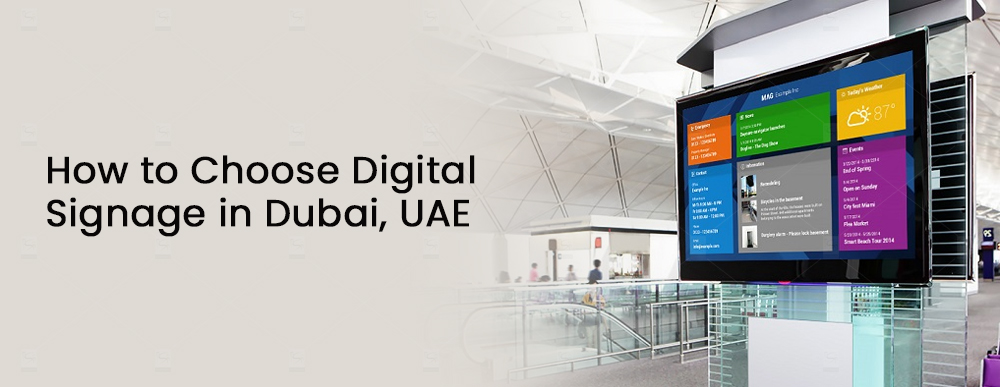
Digital Signage is the most valuable marketing asset these days. In Dubai, UAE businesses are rapidly adopting them. Digital signage is everywhere, whether you are indoor or outdoor, these flashy displays are compelling you to look at them. This is a very long term investment and it could have a huge impact on your business. There are two major types of digital signage, one is used indoors and the other is for outdoors. Both have different technologies and have different audiences. The indoor signage is used for different type of adverts, self-service, wayfinding solutions and the outdoor for different. For example, if you are visiting a clothing store, in their specific section signage is advertising price of the new arrivals and also the discounts on some articles.
For outdoor signage, you usually use it for brand awareness, not for a specific item or niche or any such thing. Both types of digital signage have a different purpose and different technology in them. When it comes to taking a decision the selection of the display screen is the most difficult. Choosing an appropriate display screen could not only impact the advertisements and campaign results but it will directly impact your system commissioning cost. The objective of this blog is to let our customers and reader understand the basic difference between different screen types that are used in digital signage and the impact of the screens on the other components of the system. In this blog, we will discuss how to choose an appropriate digital signage display?
See Also: Smart Fitness Mirror – Customized LCD Mirror Screen Technology
Here is a brief introduction to digital signage display screens most commonly used in Dubai, UAE:
1. Indoor Display Screens
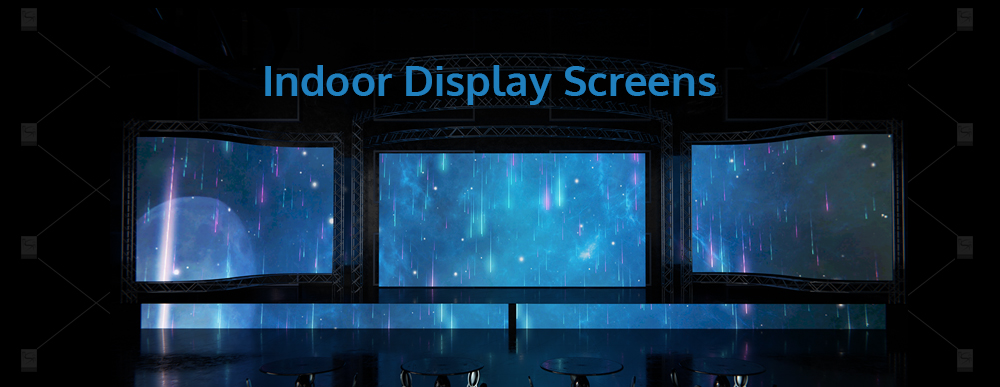
Indoor signage is gaining popularity. There are different types of indoor digital signage screens. These screens are classified in terms of size, orientation, display brightness, resolutions, multimedia content compatibility and software. Usually, the major and most prominent difference between indoor and outdoor signage screens is their brightness. The indoor digital signage screen has around 200 Nits to 500 Nits maximum. Whereas the outdoor digital signage screen could illuminate up to 1500 Nits or even in some cases 2500 Nits. The indoor digital signage screens require less power and generate less heat. Physical access is also easy so an onboard computer can also be sufficient for basic multimedia content playing.
2. Outdoor Display Screens

The outdoor signage screens are usually LED displays. As LCDs are not so good with the weather, especially the heat. Apart from the weather since the outdoor displays are meant to illuminate too high so they themselves generate a lot of heat and need separate cooling mechanisms or air conditioners. The outdoor signage, video walls, outdoor self-service kiosk and billboards are big and are meant to be viewed from a distance, so medium resolution content works perfectly fine with them, however for the indoor signage as they are meant to be viewed from a close, so we need HD content.
As for the content and media, there are dedicated software and hardware interfaces are required. As the outdoor signage screens are not just a single piece but it is a collection of small modules. Small displays of various sizes form up a large videowall or billboard or outdoor signage like a brick forming a wall. Another important thing to understand about the outdoor digital signage screens and the indoor video walls is the installation. The installation includes all the cabling, connections, holders, stands, mounts and other components.
These are very big displays and building such a large display and then transporting it to the destination is not an easy task. So such displays are built-in modular form factor. It means that there are small displays that are installed on a housing or frame to form up the full screen. There are two major differences here, one installation type is front-maintenance and the other is back-maintenance. That is not all both types have completely different types of installation components such as brackets, frames, cabling, and others which could also impact the costing.
See Also: What is the Difference in Outdoor and Indoor Digital Signage?
3. Difference between LCD and LED Screens
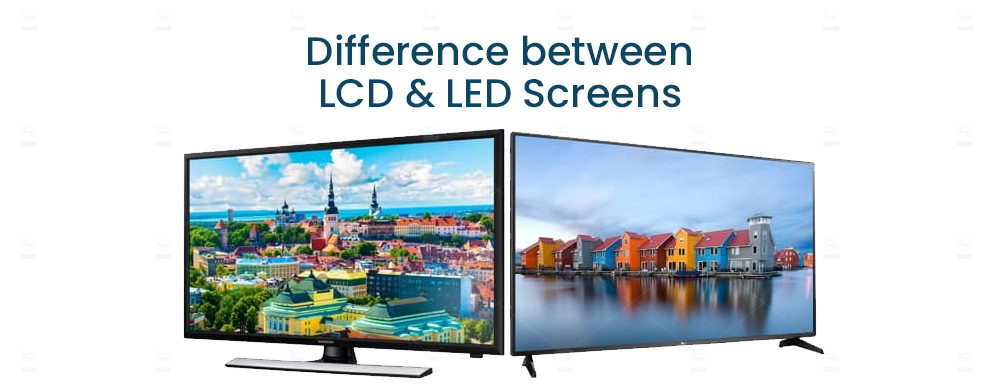
LCD is a Liquid Crystal Display and LED is a Light Emitting Diode Display. Both are completely different technologies and are suitable for different environments and applications. The LCD is sharp, high contrast and very high definition. It is an older technology so today’s LCDs are very high-tech. The issue with LCD Screens is that they are difficult to illuminate high, so suitable for indoor use only. The other disadvantage of using an LCD in outdoor environments is that it doesn’t perform well against high temperature, and for outdoor we need high brightness, if we increase the brightness the contrast will decrease and there will be more heat at the backside of the LCD. But for indoor, the LCD Screens are more cost-effective and can provide very high definition resolutions.
The LCD Screens are excellent at varying photos or videos. But if an image sticks to the screen for extended periods of time it could permanently damage it. This is why LCD Screens are mostly used indoor with multi-media content. The LED Screens however are very rigid and strong. They can display a single image for an extended time period without damaging itself. The LED Screens can illuminate to higher brightness. These days most high-end cars are using LED headlights, which are very bright and consume very low power, the same technology is used in the LED Screens in their miniature form.
The LED Screens can also effectively last longer to high temperatures without changing color or any damage. They consume less power and are extremely good at medium resolution and fairly higher resolutions too. But for the outdoor signage screens mostly medium resolution LED displays are used. The drivers and control modules are also widely available and considerably cheaper than that of the LCDs. The power consumption is also less and the cooling and air conditioning requirements are also simpler. LED Screens are an excellent choice for outdoor signage.
See Also: Integrating Exhibition Stand Kiosks with Your Digital Marketing Strategy
4. Computer and Driver Hardware Technology
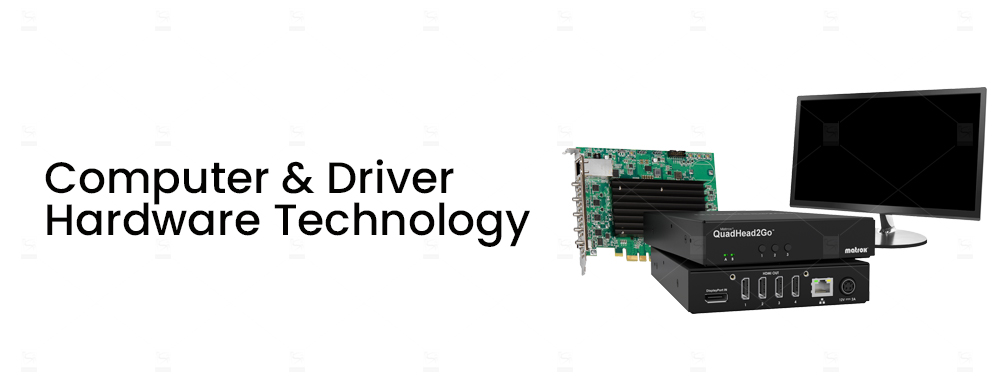
Another differentiating factor is the computer and driver hardware technology for the signage screens. No matter it is indoor or outdoor, it requires a computer or special purpose hardware to process and play multimedia content. The screen itself is just a display it requires both software and hardware to act as digital signage. There is a variety of different hardware and software available in the market but all of them can be classified into two major categories:
(I). All-in-one Computer Screen
All in one computer is a single module and majorly used in all sort of indoor signage screens. It contains an onboard computer, with Windows or Android or there are some proprietary operating systems are also there. Regardless of the operating system or the content management system, the main advantage of the onboard all-in-one computer is that it provides peripherals. You can easily upload media on-site. The computer makes it possible to run the Digital Signage Software which let remote monitoring and it enables a lot many useful features and marketing tools. The maintenance and commissioning cost is low, the lifecycle is longer. But the main issue with all-in-one digital signage screens is that they are only available in small sizes and are not available for the outdoor.
(II). Separate Computer
A separate computer is fixed inside the signage or at the signage. The computer could be either windows or android and allows all benefits of software, as well as onsite media, transfer through various peripherals. The biggest advantage of using a separate computer with the signage screens is that it can work with very large screens. It is very cost-effective for large and medium-size screens. The computer allows the decoding of the videos and media playback along with the option to install a content management system with providing a lot many additional benefits and remote access.
See Also: List of Customized Interactive Kiosks Designed by RSI
TV Signage Screens
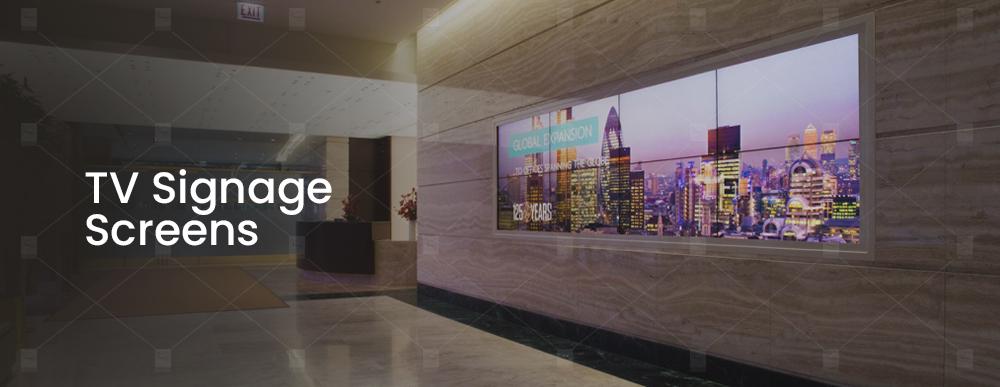
There is another type which is also very popular, it is digital signage TV with media player. These days smart TVs are also available which can be converted into digital signage easily using a smart TV application and doesn’t require any intermediary software or hardware driver. Although the TV signage is not technically signage due to the advancement of technology and compatibility, the TV Screens are frequently used as digital signage screens. The TV signage screens are extremely cost-effective, can be used only indoors and can provide excellent resolution and picture quality.
The biggest disadvantage of the TV signage is that the TVs are not built for 24/7 operations, so they are very suitable for public offices, banks, and places only operates in the day time. So in the evening, they can be turned off. It doesn’t mean the TV cannot operate 24/7 at all. The TV signage screens can also operate full day but it reduces their life and within a few years the screens start showing problems or could completely go out of service.
Digital Signage Software
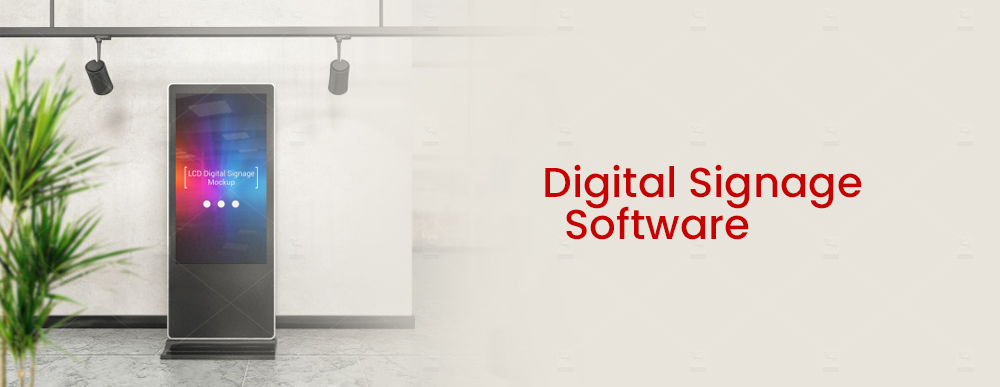
All digital signage screen needs driver hardware or software, in fact, the purpose-made dedicated hardware themselves must have a proprietary or open-source software in them. Anyway, as the digital signage screens are meant to play multimedia content so a medium to push content on them is required. As there are two major classifications of the signage screens, the indoor screens and the outdoor screens, the software also differs. There is a wide variety of digital signage software available in the market. Such as:
See Also: The Benefits of Temperature Detecting and Monitoring Kiosk
CMS for Digital Signage Screen
CMS or Content Management System for digital signage screen is also known as digital signage software. It allows various configurations and input mediums. There is two basic part of the software, one is the server-side application and administrative control panel and the second is the client software. The client software runs at the digital signage. The system administrators can control multiple digital signage screens from a single admin panel and the entire operation can be done remotely as well. There are two digital signage software types:
- LAN or Local Area Network Software: It remains in the local server which is locally connected to the signage screens
- Cloud-Based Software: It is online on the internet and is the best option for connecting with digital signage screens placed in distant locations, all the controls can be done from the head office
There is another basic type of software interface is also available, that is an in-built computer or media player and the content can be pushed to the digital signage via the USB or Memory Card.
Conclusion
Digital signages are a great marketing tool and an excellent piece of technology. They are very effective, cost-effective, can last for long and offer excellent ROIs. As in marketing, we set up different campaigns with different objective. Digital signage is no exception, for different marketing objectives different types of digital signage is required. The digital signage screen is basically the only part that communicates with your client. The industry is a bit complex there is a huge variety of manufacturers and vendors who are producing the components and a variety of supportive electronics and software tools are available. In order to ensure the best ROIs of your campaigns, you just have to choose the best digital signage screen and the hardware which suits your requirement. Else you won’t be able to get the full benefits of digital signage.
See Also: Modern Technologies to Make Your Exhibition Booth Stand Out
This is an ultimate guide to digital signage and the purpose of this blog is to provide some basic understanding of the most important component of the digital signage, the screen and its effect on the other system which could impact the cost, quality, and ROIs for the project. The software and the hardware both works in harmony to build the full system so it is important to understand the basic differences of the digital signage screens and the effect of choosing a particular screen on other components of the system. RSI Concepts is a well-reputed digital signage and video wall provider in Dubai, UAE. If you need to understand more or have an enquiry please feel free to contact us through our Contact Us page.
